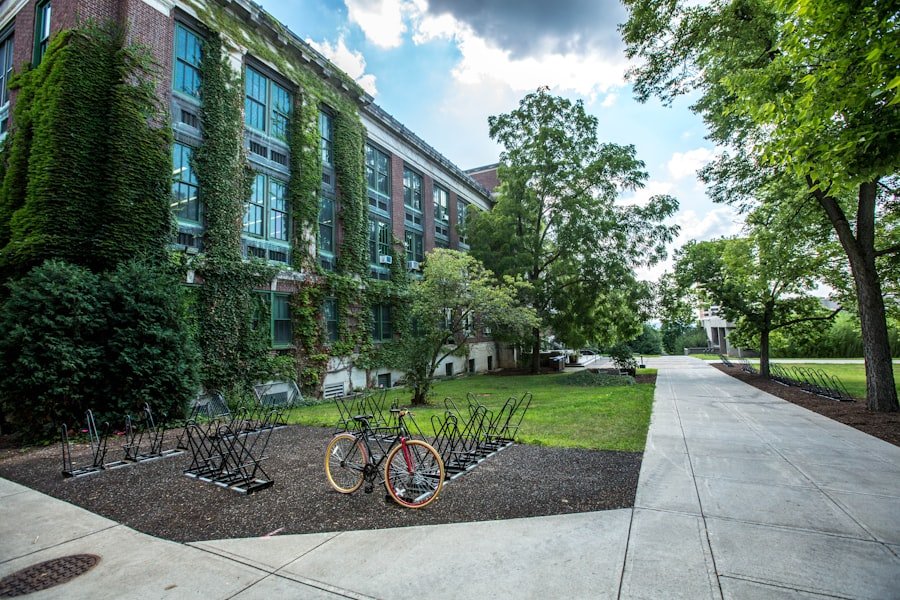Las Vegas, a city known for its vibrant entertainment scene and bustling tourism, also has a complex and evolving education system. As you navigate through the streets lined with neon lights, it’s easy to overlook the challenges and triumphs that shape the educational landscape for the children of this dynamic city. The Clark County School District (CCSD), which serves the majority of students in the area, is one of the largest school districts in the United States.
With a diverse student population that reflects the multicultural fabric of Las Vegas, the education system is tasked with meeting a wide array of needs and expectations. In recent years, there has been a growing recognition of the importance of education in fostering a prosperous future for both individuals and the community as a whole. As you delve deeper into the intricacies of the education system, you will discover that it is not just about academic achievement; it is also about nurturing well-rounded individuals who can thrive in an ever-changing world.
The challenges faced by elementary schools in Las Vegas are multifaceted, but they also present opportunities for innovation and improvement. Understanding these challenges is crucial for anyone invested in the future of education in this vibrant city.
Key Takeaways
- The education system in Las Vegas faces various challenges, including socioeconomic disparities and the need for improved teacher training and professional development.
- Elementary schools in Las Vegas are currently facing challenges such as overcrowded classrooms and a lack of resources, which impact the quality of education.
- Strategies for improving education in Las Vegas elementary schools include implementing technology in the classroom and strengthening parent and community involvement.
- Enhancing teacher training and professional development is crucial for improving the quality of education in Las Vegas elementary schools.
- Addressing socioeconomic disparities in education is essential for creating a more equitable and inclusive education system in Las Vegas.
Current Challenges Faced by Elementary Schools in Las Vegas
Elementary schools in Las Vegas are grappling with a range of challenges that hinder their ability to provide quality education. One significant issue is overcrowding. As the population continues to grow, many schools find themselves bursting at the seams, with classrooms filled beyond their intended capacity.
This overcrowding can lead to a diluted educational experience, where teachers struggle to give individual attention to each student. You may find it disheartening to learn that many children are not receiving the personalized support they need to thrive academically. Another pressing challenge is the disparity in resources among schools.
While some schools are well-funded and equipped with modern facilities and technology, others operate with outdated materials and insufficient support staff. This inequity creates a significant gap in educational quality, leaving some students at a disadvantage. As you consider these disparities, it becomes clear that addressing them is essential for leveling the playing field and ensuring that every child has access to a high-quality education.
Strategies for Improving Education in Las Vegas Elementary Schools

To tackle the challenges faced by elementary schools in Las Vegas, a multifaceted approach is necessary. One effective strategy is to increase funding for schools, particularly those in underserved areas. By allocating more resources to these schools, you can help ensure that they have access to updated materials, technology, and support staff.
This investment can lead to improved student outcomes and a more equitable education system overall. Additionally, fostering collaboration among educators can lead to innovative teaching practices that benefit students. Encouraging teachers to share best practices and work together on curriculum development can create a more cohesive educational experience.
You might consider how professional learning communities could be established within schools, allowing educators to support one another and continuously improve their teaching methods. By prioritizing collaboration and resource allocation, you can help pave the way for a brighter future for elementary education in Las Vegas.
Implementing Technology in the Classroom
| Metrics | 2018 | 2019 | 2020 |
|---|---|---|---|
| Number of classrooms with interactive whiteboards | 50 | 75 | 100 |
| Percentage of students using digital textbooks | 25% | 40% | 60% |
| Number of teachers trained in using educational technology | 20 | 40 | 60 |
In today’s digital age, integrating technology into the classroom is no longer optional; it’s essential. You may have noticed how technology has transformed various aspects of life, and education should be no exception. By incorporating digital tools into the learning environment, teachers can engage students in new and exciting ways.
For instance, interactive learning platforms can make lessons more dynamic and cater to different learning styles, ensuring that every student has an opportunity to succeed. Moreover, technology can facilitate personalized learning experiences. With adaptive learning software, students can progress at their own pace, receiving tailored instruction based on their individual needs.
This approach not only enhances understanding but also fosters a sense of ownership over their learning journey. As you reflect on the potential of technology in education, consider how it can bridge gaps and create more inclusive classrooms where every child feels valued and empowered.
Enhancing Teacher Training and Professional Development
The effectiveness of any education system hinges on the quality of its teachers. Therefore, investing in teacher training and professional development is paramount for improving education in Las Vegas elementary schools. You might be surprised to learn that many teachers feel unprepared to address the diverse needs of their students due to insufficient training opportunities.
By providing ongoing professional development programs that focus on best practices, classroom management, and culturally responsive teaching, you can equip educators with the tools they need to succeed. Additionally, mentorship programs can play a crucial role in supporting new teachers as they navigate their early years in the classroom. Pairing experienced educators with novices fosters a culture of collaboration and continuous improvement.
You may envision how this support system not only benefits teachers but ultimately enhances student learning experiences as well. By prioritizing teacher development, you contribute to creating a more effective and inspiring educational environment.
Strengthening Parent and Community Involvement

Building Partnerships through Intentional Outreach
You may recognize that building strong partnerships between schools and families requires intentional outreach efforts.
Supporting Student Needs through Community Partnerships
Schools can host workshops and events that educate parents about how they can support their children’s learning at home. Moreover, community organizations can play a pivotal role in supporting schools by providing resources and services that address students’ needs beyond academics. For instance, local businesses could partner with schools to offer mentorship programs or internships that expose students to various career paths.
Creating a Supportive Network
As you consider these possibilities, it becomes evident that strengthening parent and community involvement creates a supportive network that benefits everyone involved—students, families, educators, and the broader community.
Addressing Socioeconomic Disparities in Education
Socioeconomic disparities significantly impact educational outcomes for students in Las Vegas. Many children come from low-income families that face numerous challenges, including food insecurity and lack of access to healthcare. These factors can hinder their ability to focus on learning and achieve academic success.
You may find it troubling that such disparities exist within a city known for its wealth and prosperity. To address these issues, schools must adopt a holistic approach that considers the social determinants of education. Implementing programs that provide resources such as free meals, mental health services, and after-school support can help mitigate some of these challenges.
Additionally, advocating for policies that promote economic equity can create a more level playing field for all students. As you reflect on these disparities, consider how addressing them is not just an educational issue but a societal one that requires collective action.
Future Outlook for Education in Las Vegas Elementary Schools
The future of education in Las Vegas elementary schools holds promise if proactive measures are taken to address current challenges. With increased awareness of the importance of equitable education, there is potential for meaningful change on the horizon. You may envision a future where every child has access to high-quality resources, innovative teaching methods, and supportive environments that foster growth.
As community members rally together—educators, parents, policymakers, and local organizations—there is an opportunity to create a more inclusive educational landscape. By prioritizing collaboration, investing in technology, enhancing teacher training, and addressing socioeconomic disparities, you can contribute to shaping a brighter future for elementary education in Las Vegas. The journey may be challenging, but with determination and collective effort, you can help ensure that every child has the opportunity to succeed and thrive in this vibrant city.
